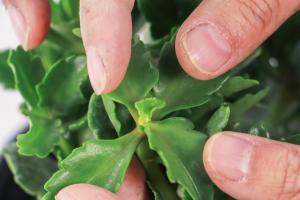Introduction
Fruit trees are an important part of the agricultural industry, providing fruits for human consumption as well as for ornamental purposes. However, what plant group do fruit trees belong to? In this article, we will explore the answer to this question and provide a deeper understanding of the classification and characteristics of fruit trees.
The Plant Group of Fruit Trees
Fruit trees, such as apple, pear, peach, and cherry, belong to the angiosperm group, which is commonly referred to as flowering plants. Angiosperms are the largest and most diverse group of plants, and they are found in almost all environments on Earth. They are characterized by their ability to produce flowers, which in turn form fruits.
The process of fruit formation starts with pollination, where pollen grains from the male part of the flower (anther) are transferred to the female part of the same or a different flower (stigma). This fertilization process leads to the development of the ovary into a fruit. Fruit trees are examples of angiosperms that bear fruits with seeds enclosed in a protective layer (pericarp).
Classification of Fruit Trees
Fruit trees are classified into different families and genera based on their characteristics, such as leaf shape and arrangement, flower type, and fruit structure. Some common families of fruit trees include the Rosaceae family, which includes apple, pear, peach, and plum trees; the Rutaceae family, which includes citrus trees such as orange, lemon, and lime; and the Annonaceae family, which includes tropical fruit trees such as guava and mango.
Within each family, fruit trees are further classified into different genera based on their similarities and differences. For example, the Rosaceae family includes the genus Prunus, which includes peach, plum, and cherry trees, and the genus Malus, which includes apple trees.
Characteristics of Fruit Trees
Fruit trees have several characteristics that make them distinct from other plants. For example, they have a perennial life cycle and can live for many years, with some species known to live for hundreds of years. Fruit trees are also capable of producing fruits for several years, with some trees producing fruit for up to 50 years or more.
Another characteristic of fruit trees is their ability to adapt to different environments and climates. While some fruit trees are adapted to grow in temperate climates, others are adapted to grow in tropical or subtropical climates. Fruit trees also vary in their growth habit, with some growing tall and narrow and others growing wide and bushy.
The Importance of Fruit Trees
Fruit trees play an important role in human nutrition and food security. They provide a source of essential vitamins and minerals, such as vitamin C and potassium, and are a good source of dietary fiber. Fruit trees also contribute to the social and cultural aspects of human life and are often associated with festivals and celebrations.
Furthermore, fruit trees are important for the environment as they provide habitat and food for wildlife. They also contribute to soil conservation and help in reducing soil erosion. Additionally, fruit trees have economic importance, as they provide a source of income for farmers and contribute to the overall economy of a country.
Conclusion
In conclusion, fruit trees belong to the angiosperm group of plants and are classified into different families and genera based on their characteristics. Fruit trees have several unique characteristics, such as their ability to produce fruits for several years and adapt to different environments. They play an important role in human nutrition, the environment, and the economy. Understanding the classification and characteristics of fruit trees is important for the sustainable management and cultivation of these important plants.

 how many times do yo...
how many times do yo... how many planted tre...
how many planted tre... how many pine trees ...
how many pine trees ... how many pecan trees...
how many pecan trees... how many plants comp...
how many plants comp... how many plants can ...
how many plants can ... how many plants and ...
how many plants and ... how many pepper plan...
how many pepper plan...

































